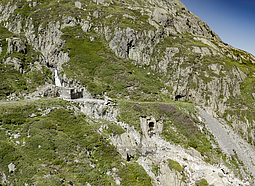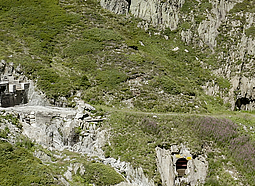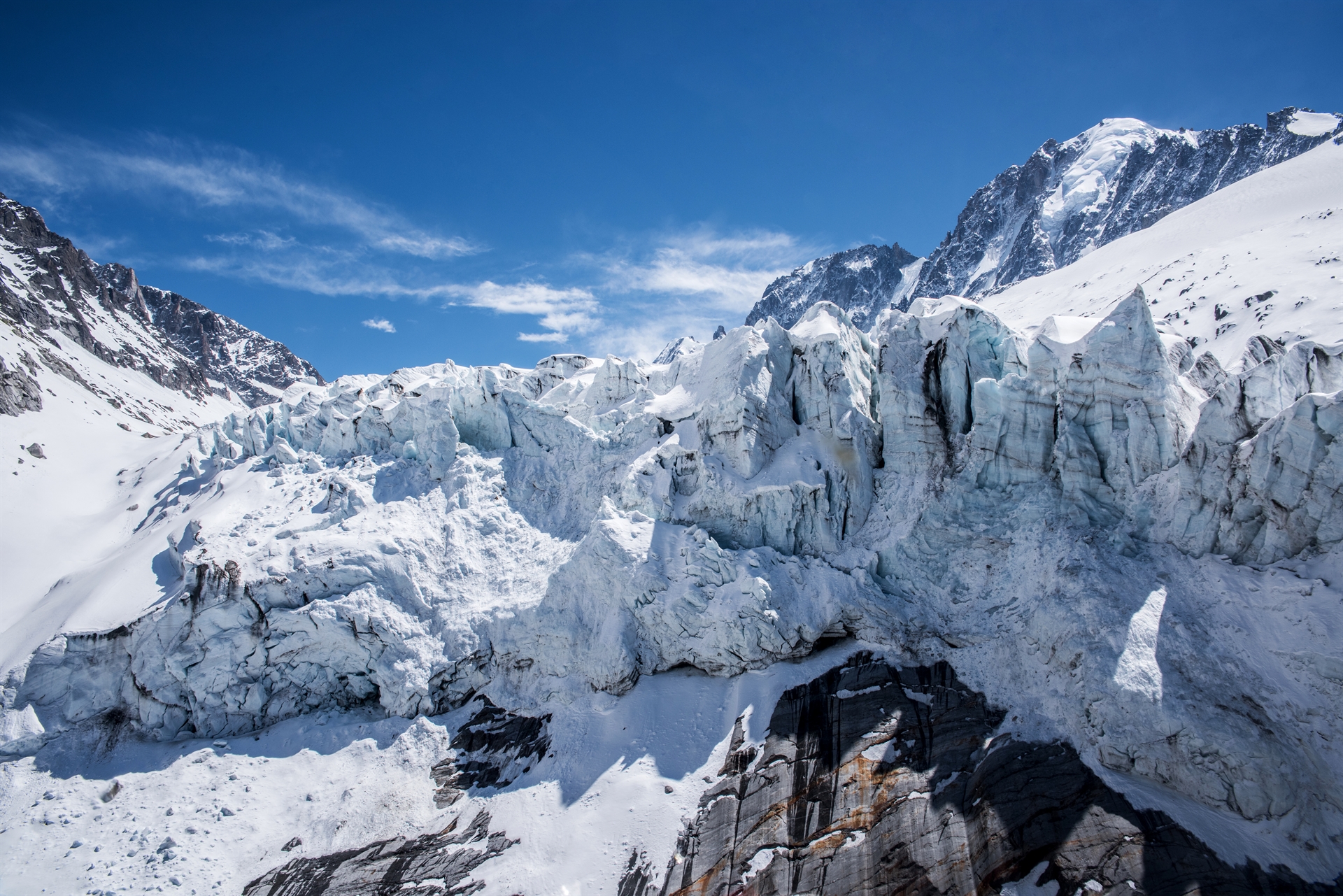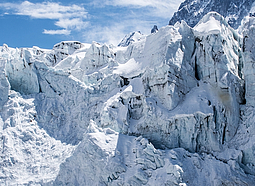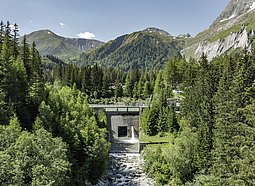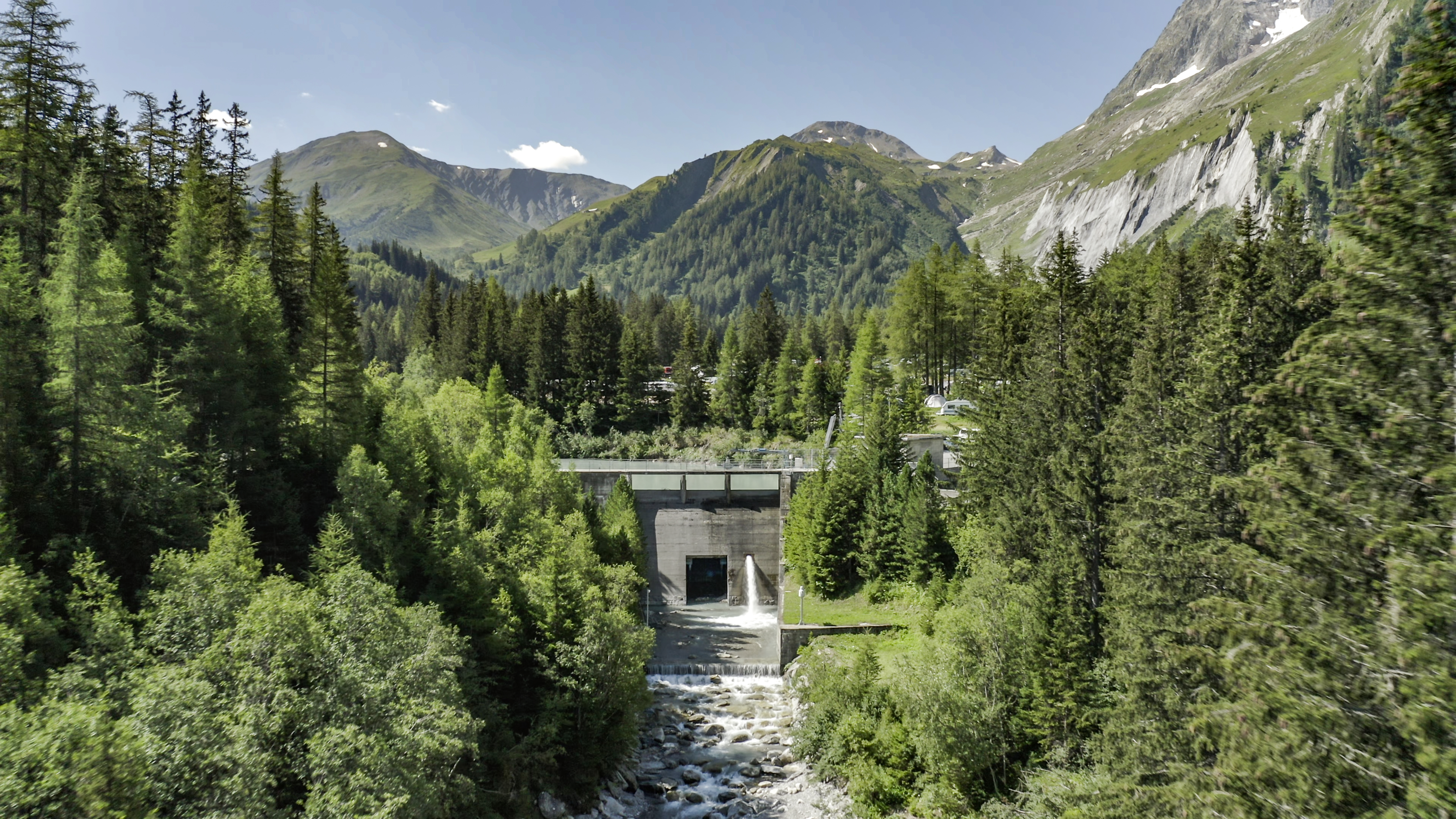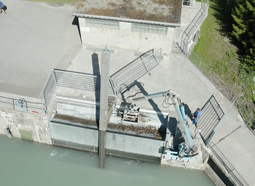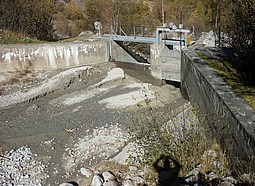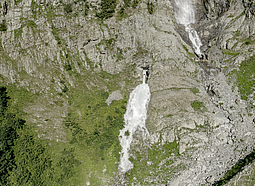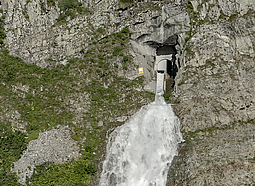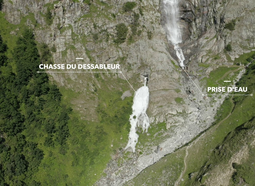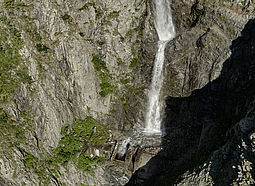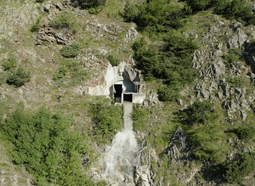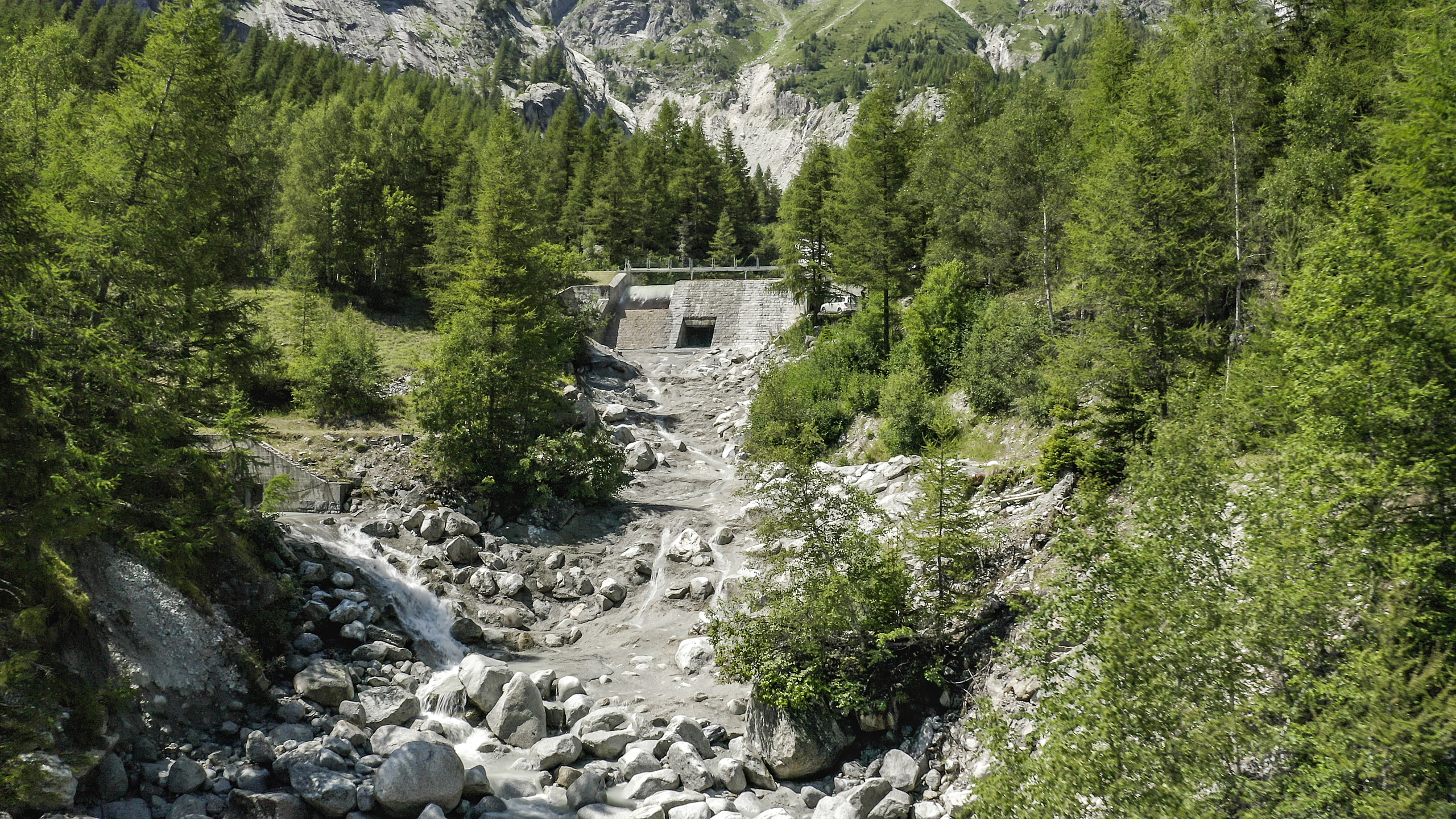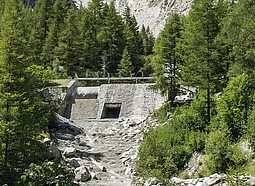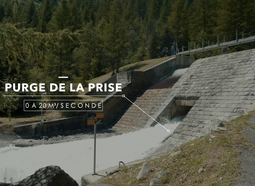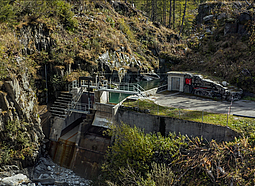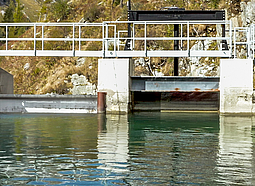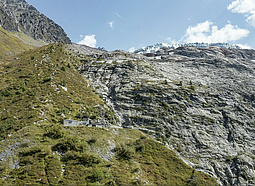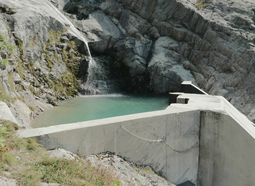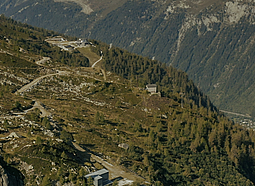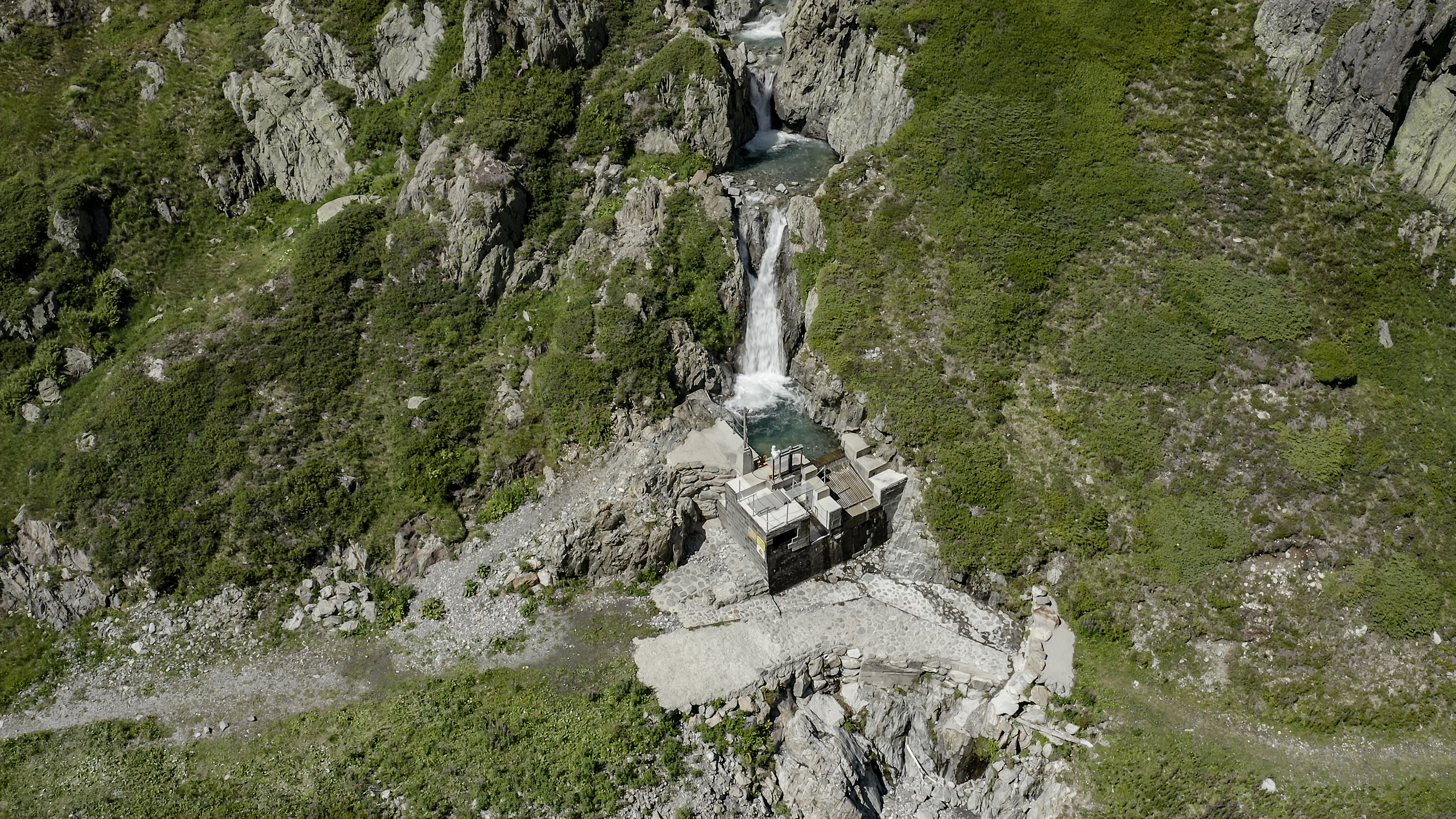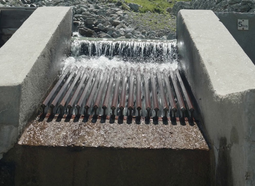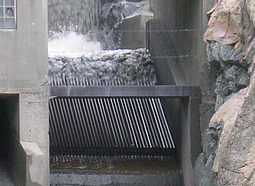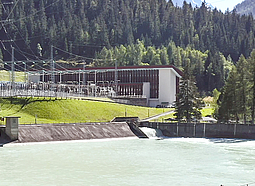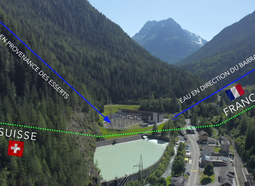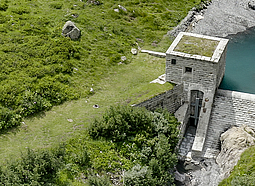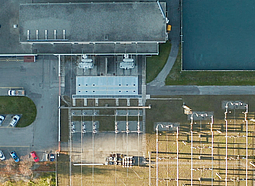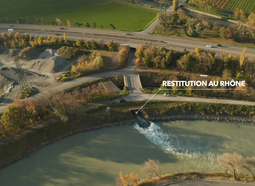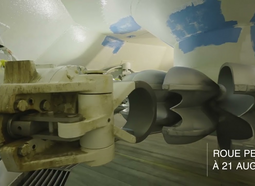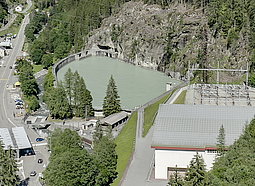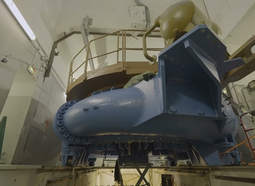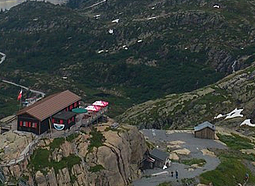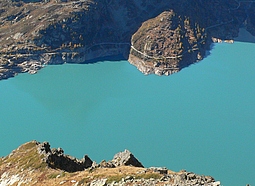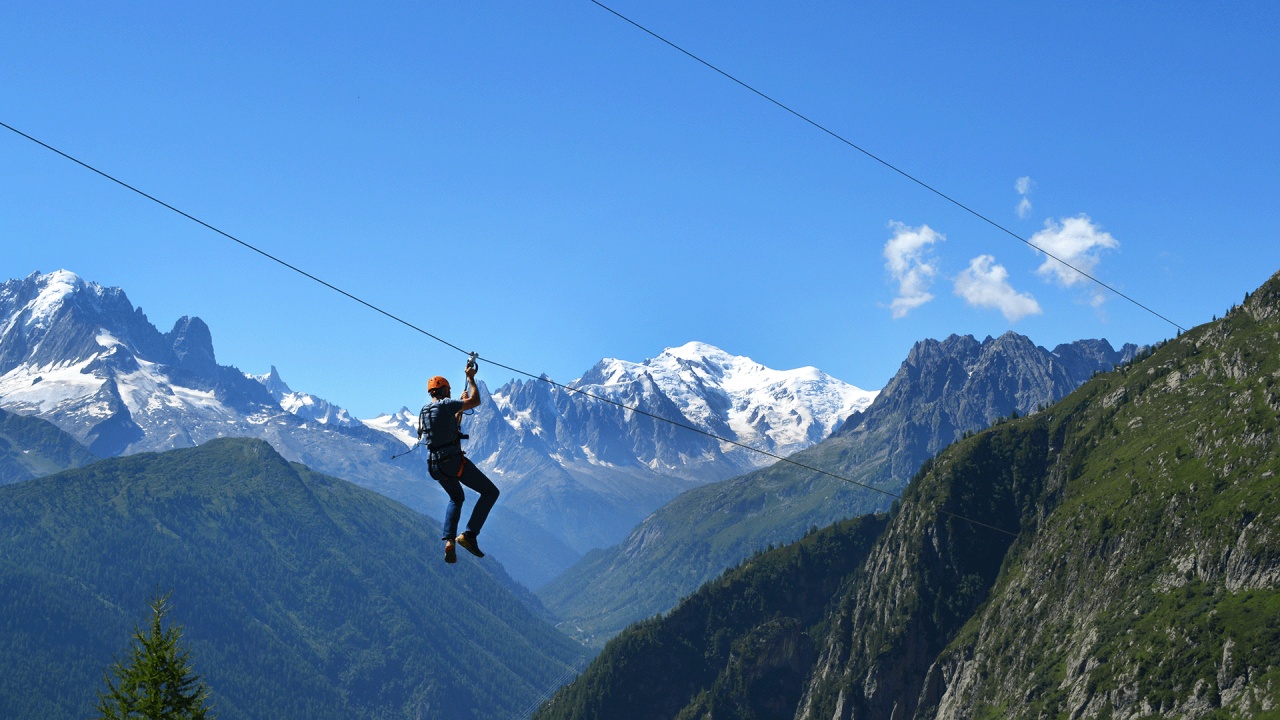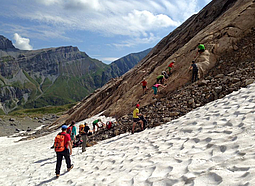Hydropower is the mainstay of Switzerland’s electricity supply and provides more than half of the country’s power production. In France, it represents 12% of total production.
The advantages of Swiss hydropower
The backbone of Switzerland's electricity supply
Hydropower represents close to 60% (56.4% in 2019) of annual energy production in Switzerland.The number one source of renewable energy
In 2019, 56.4% of the electricity produced in Switzerland came from hydropower, while all other renewable energy sources combined (solar, wind, biomass, etc.) only represented around 8.4% of Swiss production.Almost zero CO2 emissions
Hydropower is one of the most environmentally friendly sources of energy.A source of energy that is flexible, rapidly available and in large quantities
It is essential to the stability of the electrical grid.A home-grown source of energy with potential for long-term use
100% Swiss hydropower has proved its worth over more than a century.Already in place
188 large hydropower plants with more than 10 MW of installed capacity are in operation in Switzerland.An important economic player
The sector accounts for more than 5,000 direct jobs, mainly in outlying regions. Hydropower pays significant contributions to communities each year (taxes, fees and duties) and creates tourist attractions.An energy predestined for Switzerland
Thanks to its topology, climate and considerable average precipitation, Switzerland provides ideal conditions for exploiting hydropower.One of the most efficient energy storage solutions
Excess current can be used to pump water to a storage reservoir for later reuse. It is also possible to store energy in summer that will be needed in winter.Flood protection
Reservoirs reduce peak flows by up to a quarter in bad weather, helping to reduce the risk of flooding.A source of energy with multiple uses
Hydropower is also used for supplying water to households and industry as well as agricultural irrigation and tourism.
Switzerland is often referred to as the water tower of Europe and with good reason if we compare its energy mix to that of its European neighbours. Hydropower represents almost 60% of electricity produced in Switzerland compared to 12.5% in France, 3.9% in Germany and 17.8% in Italy. The only European countries that feature a higher level of hydropower in their energy mix are Norway (95%) and Austria (60.1%) [2018 figures]. Thanks to hydropower, Switzerland is also one of the countries in Europe with the highest share of electricity from renewable energies.
Swiss hydropower is set to play a central role in the 2050 energy strategy. The Federal Council intends to exploit its potential even further.
With its 2050 energy strategy, the Swiss Confederation plans to increase the annual production of hydroelectricity to reach 38.6 TWh by 2050 (37.4 TWh of which is set to be achieved by 2035). An increase in hydropower generation of 3.2 TWh corresponds to approximately 10% of the current production. As part of this strategy, existing power plants will have to be renovated and extended and the construction of new power plants will be required, all while taking into account environmental requirements. The Swiss Confederation also supports hydropower in a variety of other ways, particularly by contributing to investments in the construction or development of existing facilities, as well as time-limited financial aid for hydropower installations which sell their production on the free market (market premium). However, further measures are still needed to improve the framework conditions for hydropower sustainably and over the long term. Energy law is also being revised.
The vast majority of hydropower facilities depend on glacial intakes, this particularly includes storage structures in the Alps (directly) and some run-of-river power plants located in flood plains (indirectly). Climate change is changing the level of glaciation in the watersheds and therefore glacial contribution to natural inputs.
At present, melting glaciers provide a certain level of regularity in flow rates but only add around 3 to 4% to national production. The disappearance of the glaciers will therefore only have a limited effect on production, even if volumes of incoming water increase by 2040-2050 over the medium term, which means more production for the most frozen catchments. On the other hand, the stability of the water supply in the dams which today is punctuated by melting glaciers will disappear. If relying solely on precipitation in the form of rain or snow, some years will be drier and some wetter than others. Due to this greater variability, reservoirs may not be filled in some years, while there will be too much water in other years.
In terms of short- and medium-term risks, landslides, ground instability, mudslides or floods may occur. But this goes to emphasise the important role of reservoirs in protecting populations downstream from such dangers.
Opportunities also exist as over the long term: future glacial lakes will form in bedrock cover areas and provide new hydropower potential.
In terms of production costs, hydropower costs around 5 to 7 centimes per kWh in Switzerland. However, the costs of photovoltaic and wind power are constantly falling. This may make hydropower seem less competitive.
However, a kilowatt hour of hydropower does not correspond to a kilowatt hour of wind or photovoltaic energy. These energies are intermittent and only produce when the wind is blowing or the sun is shining. Hydropower, by contrast, is much more stable and predictable. Using dams, we can generate precisely as much energy as needed at any given time. This availability and flexibility are the great advantages of hydropower. It is therefore not only necessary to consider the cost price of this energy, but also the value it brings to the energy system.
Pumped storage thus complements new renewable energies in the best way possible. In the event of strong wind turbine and/or photovoltaic generation, this power can be used to store surplus energy by pumping water and then releasing it when needed.
History of hydropower in Switzerland
For the inhabitants of the Swiss Alps, water was one of the few usable sources of energy along with wood. The first energy to be harnessed was that of the water wheel. Then, from 1879, the first Swiss hydropower plants began to produce electricity. This marked the beginning of Swiss hydropower and the development of the electricity supply of our country. The first hydropower plants were built along streams and rivers. After the Second World War, the production of energy by hydropower experienced major development. Today, hydropower is the backbone of Switzerland's electricity supply.
The epic of the dams
In 1879, the hotelier Johannes Badrutt commissioned the first hydropower plant in Saint-Moritz (7 kW, or 0.007 MW) to produce the current needed for the electric lighting in his Engadine hotel, the Kulm. Hotel guests came to admire the dining room lit by six lamps, the entrance hall, the kitchen and a salon. This technical prowess put Badrutt far ahead of his time.
The industrialisation of Switzerland was accompanied by a strong increase in electrical needs for public lighting, rail transport and industry. The economic growth that followed the Second World War reinforced this phenomenon. It was at this time that projects, some very ambitious, were carried out in the Alps to exploit the power of water. The Lucendro power station situated at the Gotthard pass and built between 1942 and 1947 is but one example. Several new reservoirs were created between 1950 and 1960. Hydropower then experienced its main boom: almost half of the hydroelectric works currently operated in Switzerland date from this period.
Until the start of the 1970s, hydropower supplied close to 90% of electricity produced in Switzerland. With the construction of nuclear power plants, the share generated by hydropower gradually decreased. However, Swiss hydropower currently covers more than 50% of our electricity needs, which still makes it the main source of electricity in the country today.

